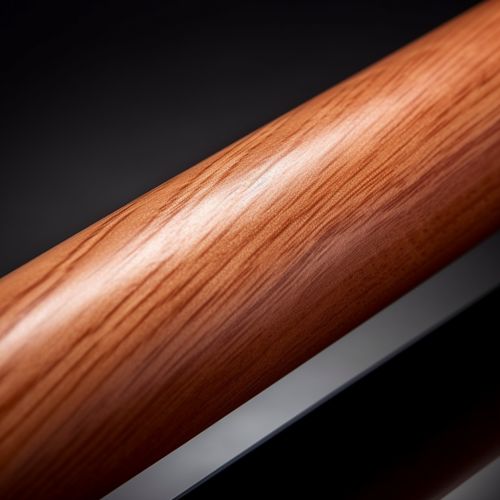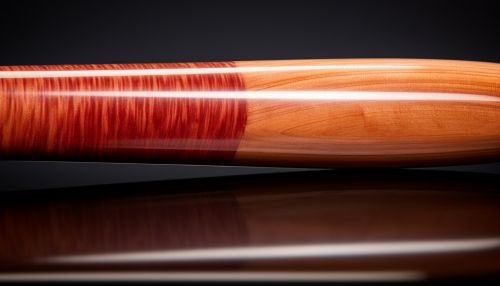Baseball bat
History
The baseball bat is a smooth wooden or metal club used in the sport of baseball to hit the ball after it is thrown by the pitcher. The origin of the baseball bat is thought to date back to the 1850s when baseball was still a relatively young sport. Early baseball bats were often made from a single piece of wood, with the grain running parallel to the length of the bat. This design was intended to give the bat strength and prevent it from shattering upon impact with the ball.
Design and Construction


Baseball bats are typically made from ash wood, although maple, hickory, and bamboo are also used. The choice of wood is often a matter of personal preference for the player. Ash is light and flexible, allowing for a larger sweet spot, while maple is harder and denser, providing more power for the hitter. Hickory is even denser than maple but is much heavier, which can slow down swing speed. Bamboo bats are the newest addition to the baseball bat family and are known for their durability.
The bat's design is carefully regulated by the rules of baseball. According to Major League Baseball (MLB) standards, a baseball bat cannot exceed 2.61 inches in diameter at the thickest part and must be no longer than 42 inches. However, most players prefer a bat that is 33 to 34 inches long. The bat's weight is typically less than 33 ounces.
Manufacturing Process
The manufacturing process for a baseball bat begins with the selection of high-quality wood. The wood is then cut into billets, which are cylindrical blanks that are roughly the same diameter as the finished bat. The billets are then turned on a lathe, where they are shaped into a bat with a precise weight and balance. The bat is then sanded smooth and coated with a protective finish. The entire process takes several hours and requires a high degree of skill and precision.
Types of Bats
There are several types of baseball bats, each designed for different levels of play and types of hitters. The three main types are wood bats, aluminum bats, and composite bats.
Wood bats are the traditional choice and are used in professional leagues. They provide a classic feel and sound but can break if not used properly.
Aluminum bats, also known as metal bats, are popular in amateur leagues for their durability and lighter weight. They are generally easier to swing and can hit the ball further than wood bats.
Composite bats are made from a mixture of materials, usually carbon fiber, fiberglass, and graphite. They are lightweight and offer good swing speed and power, but they are also the most expensive type of bat.
Bat Performance
The performance of a baseball bat is measured in terms of its "sweet spot," the area of the bat that provides the most power when hitting the ball. The size and location of the sweet spot vary depending on the type and construction of the bat. In general, bats with a larger diameter and longer length have a larger sweet spot.
Another important factor in bat performance is swing weight, which is a measure of how heavy the bat feels when swung. A bat with a lower swing weight will feel lighter and be easier to swing, while a bat with a higher swing weight will feel heavier and provide more power.
Regulations
Baseball bat regulations vary by league and level of play. In professional baseball, the rules are very strict. Bats must be made of wood and must meet certain size and weight requirements. In amateur leagues, metal and composite bats are often allowed, but they must still meet certain performance standards.
